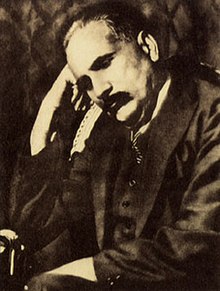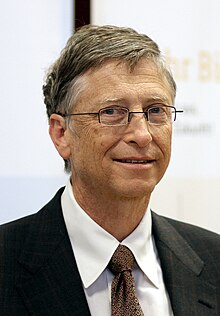Tuesday, 22 October 2013
Biography of Allama Muhammad Iqbal
For other people named Muhammad Iqbal, see Muhammad Iqbal (disambiguation).
 | |
| Born | 9 November 1877 Sialkot, Punjab, British India |
|---|---|
| Died | 21 April 1938 (aged 60) Lahore, Punjab, British India |
| Era | 20th century philosophy |
| Region | British India |
| Main interests | Urdu poetry, Persian poetry |
| Notable ideas | Two-Nation Theory,Conception of Pakistan |
Influenced by[show]
| |
Influenced[show]
| |
| Website | Allama Iqbal |
Sir Muhammad Iqbal (Urdu: محمد اقبال) (November 9, 1877 – April 21, 1938), also known as Allama Iqbal (علامہ اقبال), was a philosopher,poet and politician[1] in British India who is widely regarded as having inspired the Pakistan Movement. He is considered one of the most important figures in Urdu literature,[2] with literary work in both the Urdu and Persian languages.[1][2]
Iqbal is admired as a prominent classical poet by Pakistani, Indian, Iranian, and other international scholars of literature.[3][4] Though Iqbal is best known as an eminent poet, he is also a highly acclaimed "Muslim philosophical thinker of modern times".[1][4] His first poetry book, Asrar-e-Khudi, appeared in the Persian language in 1915, and other books of poetry include Rumuz-i-Bekhudi, Payam-i-Mashriq and Zabur-i-Ajam. Amongst these his best known Urdu works are Bang-i-Dara, Bal-i-Jibril, Zarb-i Kalim and a part ofArmughan-e-Hijaz.[5] In Iran and Afghanistan, he is famous as Iqbāl-e Lāhorī (اقبال لاهوری) (Iqbal of Lahore), and he is most appreciated for his Persian work.[6] Along with his Urdu and Persian poetry, his various Urdu and English lectures and letters have been very influential in cultural, social, religious and political disputes over the years.[5]
While studying law and philosophy in England, Iqbal became a member of the London branch of the All India Muslim League.[4][5]Later, in one of his most famous speeches, Iqbal pushed for the creation of a Muslim state in Northwest India. This took place in his presidential speech in the League's December 1930 session.[4][5] He was very close to the founder of Pakistan, Mohammad Ali Jinnah.[5]
In much of Southern Asia and Urdu speaking world, Iqbal is regarded as the Shair-e-Mashriq (شاعر مشرق, "Poet of the East").[9][10][11] He is also called Muffakir-e-Pakistan (مفکر پاکستان, "The Thinker of Pakistan") and Hakeem-ul-Ummat (حکیم الامت, "The Sage of the Ummah"). The Pakistan government officially named him a "national poet".[4] His birthday Yōm-e Welādat-e Muḥammad Iqbāl (یوم ولادت محمد اقبال) or (Iqbal Day) is a public holiday in Pakistan.[12] In India he is also remembered as the author of the popular song Saare Jahaan Se Achcha.
Biography of Bill Gates
For other people named Bill Gates, see Bill Gates (disambiguation).
| Bill Gates | |||
|---|---|---|---|

Gates in 2013
| |||
| Born | William Henry Gates III October 28, 1955 (age 57) Seattle, WA, US | ||
| Residence | Medina, WA, US | ||
| Alma mater | Harvard University | ||
| Occupation | Chairman of Microsoft Co-Chair of the Bill & Melinda Gates Foundation CEO of Cascade Investment Chairman of Corbis | ||
| Years active | 1975–present | ||
| Net worth | US$ 72 billion (2013)[1] | ||
| Board member of | Berkshire Hathaway | ||
| Spouse(s) | Melinda Gates (1994–present) | ||
| Children | 3 | ||
| Parents | William H. Gates, Sr. Mary Maxwell Gates | ||
| Signature | |||
| Website | |||
| TheGatesNotes.com | |||
William Henry "Bill" Gates III (born October 28, 1955)[2] is an American business magnate, investor, programmer,[3] inventor[4] and philanthropist. Gates is the former chief executive and current chairman of Microsoft, the world’s largest personal-computer softwarecompany, which he co-founded with Paul Allen.
He is consistently ranked in the Forbes list of the world's wealthiest people[5] and was the wealthiest overall from 1995 to 2009—excluding 2008, when he was ranked third;[6] in 2011 he was the wealthiest American and the world's second wealthiest person.[7][8]According to the Bloomberg Billionaires List, Gates is the world's richest person in 2013, a position that he last held on the list in 2007.[1]
During his career at Microsoft, Gates held the positions of CEO and chief software architect, and remains the largest individual shareholder, with 6.4 percent of the common stock.[a] He has also authored and co-authored several books.
Gates is one of the best-known entrepreneurs of the personal computer revolution. Gates has been criticized for his business tactics, which have been considered anti-competitive, an opinion which has in some cases been upheld by the courts.[11][12] In the later stages of his career, Gates has pursued a number of philanthropic endeavors, donating large amounts of money to various charitable organizations and scientific research programs through the Bill & Melinda Gates Foundation, established in 2000.[13]
Gates stepped down as chief executive officer of Microsoft in January 2000. He remained as chairman and created the position of chief software architect for himself. In June 2006, Gates announced that he would be transitioning from full-time work at Microsoft to part-time work, and full-time work at the Bill & Melinda Gates Foundation. He gradually transferred his duties to Ray Ozzie, chief software architect, and Craig Mundie, chief research and strategy officer. Gates's last full-time day at Microsoft was June 27, 2008. He remains at Microsoft as chairman.
Biography of Joseph Stalin
"Stalin" redirects here. For other uses, see Stalin (disambiguation).
Joseph Stalin
Иосиф Виссарионович Сталин (Russian)
იოსებ ბესარიონის ძე სტალინი(Georgian)
| |||
|---|---|---|---|
 | |||
| General Secretary of the Central Committee of the Communist Party of the Soviet Union | |||
| In office 3 April 1922 – 16 October 1952 | |||
| Preceded by | Vyacheslav Molotov (as Responsible Secretary) | ||
| Succeeded by | Nikita Khrushchev (office reestablished) | ||
| Chairman of the Council of Ministers | |||
| In office 6 May 1941 – 5 March 1953 | |||
| First Deputies | Nikolai Voznesensky Vyacheslav Molotov | ||
| Preceded by | Vyacheslav Molotov | ||
| Succeeded by | Georgy Malenkov | ||
| People's Commissar for Defense of the Soviet Union | |||
| In office 19 July 1941 – 25 February 1946 | |||
| Premier | Himself | ||
| Preceded by | Semyon Timoshenko | ||
| Succeeded by | Nikolai Bulganin after vacancy | ||
| Member of the Secretariat | |||
| In office 3 April 1922 – 5 March 1953 | |||
| Full member of the Presidium | |||
| In office 25 March 1919 – 5 March 1953 | |||
| Member of the Orgburo | |||
| In office 16 January 1919 – 5 March 1953 | |||
| Personal details | |||
| Born | 18 December 1878 Gori, Tiflis Governorate,Russian Empire | ||
| Died | 5 March 1953 (aged 74) Kuntsevo Dacha, Kuntsevo,Russian SFSR, Soviet Union | ||
| Resting place | Lenin's Mausoleum, Moscow,Russian SFSR, Soviet Union (9 March 1953 - 31 October 1961) Kremlin Wall Necropolis, Moscow, Russian Federation(from 31 October 1961) | ||
| Nationality | Georgian | ||
| Political party | Communist Party of the Soviet Union | ||
| Spouse(s) | Ekaterina Svanidze (1906–1907) Nadezhda Alliluyeva (1919–1932) | ||
| Children | Yakov Dzhugashvili, Vasily Dzhugashvili, Svetlana Alliluyeva | ||
| Religion | None (atheist), formerlyGeorgian Orthodox | ||
| Signature |
| ||
| Military service | |||
| Allegiance | |||
| Service/branch | Soviet Armed Forces | ||
| Years of service | 1943–1953 | ||
| Rank | Marshal of the Soviet Union(1943–1945) Generalissimus of the Soviet Union (1945–1953) | ||
| Commands | All (supreme commander) | ||
| Battles/wars | World War II | ||
| Awards |  | ||
Joseph Stalin or Iosif Vissarionovich Stalin (Russian: Ио́сиф Виссарио́нович Ста́лин, pronounced [ˈjosʲɪf vʲɪsɐˈrʲonəvʲɪt͡ɕ ˈstalʲɪn]; born Ioseb Besarionis dze Jugashvili, Georgian: იოსებ ბესარიონის ძე ჯუღაშვილი, pronounced [iɔsɛb bɛsariɔnis d͡ze d͡ʒuɣaʃvili]; 18 December 1878[1] – 5 March 1953) was the de facto leader of the Soviet Union from the mid-1920s until his death in 1953.
Among the Bolshevik revolutionaries who took part in the Russian Revolution of 1917, Stalin was appointed General Secretary of the party's Central Committee in 1922. He subsequently managed to consolidate power following the 1924 death of Vladimir Lenin through suppressing Lenin's criticisms (in the postscript of his testament), expanding the functions of his role, all the while eliminating any opposition. By the late 1920s, he was the unchallenged leader of the Soviet Union. He remained general secretary until the post was abolished it in 1952, concurrently serving as the Premier of the Soviet Union from 1941 onward.
Under Joseph Stalin's rule, the concept of "socialism in one country" became a central tenet of Soviet society. He replaced the New Economic Policy introduced by Lenin in the early 1920s with a highly centralised command economy, launching a period ofindustrialization and collectivization that resulted in the rapid transformation of the USSR from an agrarian society into an industrial power.[2] However, the economic changes coincided with the imprisonment of millions of people in Soviet correctional labour camps[3]and the deportation of many others to remote areas.[3] The initial upheaval in agriculture disrupted food production and contributed to the catastrophic Soviet famine of 1932–1933, known as the Holodomor in Ukraine. Later, in a period that lasted from 1936–39, Stalin instituted a campaign against alleged enemies of his regime called the Great Purge, in which hundreds of thousands were executed. Major figures in the Communist Party, such as the old Bolsheviks, Leon Trotsky, and several Red Army leaders were killed after being convicted of plotting to overthrow the government and Stalin.[4]
In August 1939, Stalin entered into a non-aggression pact with Nazi Germany that divided their influence within Eastern Europe, but Germany later violated the agreement and launched a massive invasion of the Soviet Union in June 1941. Despite heavy human and territorial losses, Soviet forces managed to halt the Nazi incursion after the decisive battles of Moscow and Stalingrad. After defeating the Axis powers on the Eastern Front, the Red Army captured Berlin in May 1945, effectively ending the war in Europe for theAllies.[5][6] The Soviet Union subsequently emerged as one of two recognized world superpowers, the other being the United States.[7]The Yalta and Potsdam conferences established communist governments loyal to the Soviet Union in the Eastern Bloc countries asbuffer states, which Stalin deemed necessary in case of another invasion. He also fostered close relations with Mao Zedong in Chinaand Kim Il-sung in North Korea.
Stalin led the Soviet Union through its post-war reconstruction phase, which saw a significant rise in tension with the Western worldthat would later be known as the Cold War. During this period, the USSR became the second country in the world to successfully develop a nuclear weapon, as well as launching the Great Plan for the Transformation of Nature in response to another widespread famine and the Great Construction Projects of Communism. In the years following his death, Stalin and his regime have been condemned on numerous occasions, most notably in 1956 when his successor Nikita Khrushchev denounced his legacy and initiated a process of de-Stalinization. He remains a controversial figure today, with many regarding him as a tyrant[8] similar to his wartime enemy Adolf Hitler; however, popular opinion within the Russian Federation is mixed.
Subscribe to:
Comments (Atom)



